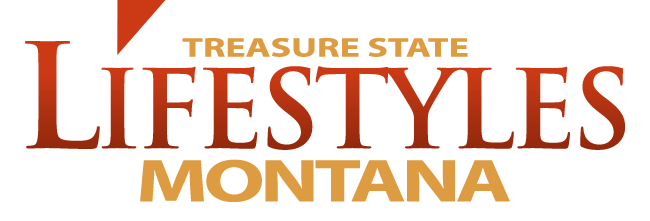Article by Brad Reynolds. Photos courtesy of the C.M. Russell Museum
Few men embody the West like Charlie Russell, and few Montanans rival him in fame. Over the last century, he has been the subject of countless books and documentaries. He is immortalized in art exhibits across the nation and through the C.M. Russell Museum here in the Treasure State. One does not call himself a Montanan before glimpsing a Russell. Now, red-blooded locals can visit the cowboy artist at home.
In 2017, the C.M. Russell Museum (in Great Falls) embarked on a project to preserve and reinterpret Charlie’s studio and the home that he and his wife, Nancy, built. After two years of extensive research, forensic investigation, curation, and reconstruction, the C.M. Russell Museum reopened these buildings to the public. With new, interactive components, the Russell House and Studio provide visitors a unique opportunity to connect with Charlie as an artist, friend, and spouse.
When Charlie Met Nancy
In 1895, Charlie Russell was experiencing something of a crisis. He was 31 and unmarried. The Open Range was shrinking. The West he knew was dying. He’d given up on being a cowboy. His future as an artist was unclear.
That October, Charlie visited his friends Ben and Lela Roberts in Cascade and was introduced to the young woman living with them—Nancy Cooper.
According to Nancy, she and Lela were getting dinner ready when Ben entered the house with Charlie. The younger man took off his Stetson and shook hands with everyone in the house, including the youngest Roberts child, who was just a baby. As Charlie washed up before dinner, Nancy stole glances at him, noting his “snug-fitting” riding breeches and his gray-blue eyes. While trying to get a look at him from the boots up, Nancy’s wandering eyes were met by Charlie’s. He laughed, and Nancy nearly dropped their dinner on the floor.
One year later, on September 9, 1896, the couple met at the Roberts home again, this time to be wed. Charlie spent his last fifteen dollars on the ceremony—ten to the preacher and five to bribe the town, who were set to serenade them with pans and kettles (as was customary at the time). Following the ceremony, everyone was served refreshments (prepared by the newlyweds), and then Charlie and Nancy walked hand-in-hand to their honeymoon cabin behind the Roberts’ house.
A Place to Call Their Own
In 1900, construction of the Russell’s Great Falls home was complete—two floors of lath and plaster, finished with hand-stamped wallpaper and elegant décor. Charlie’s friends popped in often as he painted in the front room. By 1903, however, Nancy had grown weary of the never-ending hubbub and lingering smell of turpentine. A log cabin studio was built on the adjacent lot to the west, providing (some) distance between Charlie’s home life and career.
The Russells complemented each other nicely, not just in their personal relationship but in business as well. Where Charlie was skilled at making art, Nancy was adept at marketing it. It could be argued that had Charlie never met his bride, he might not have become the world-renowned artist he is today.
World’s First & Finest
When Charlie passed in 1926, Nancy Russell, offered to donate Charlie’s log cabin studio (and its contents) if the City of Great Falls agreed to purchase the Russell home and its two adjacent lots. A committee of the Great Falls Chamber of Commerce took up the challenge and raised an additional $5,000 for a Charles M. Russell Memorial. On July 4, 1930, the committee reopened Charlie’s studio with a gallery addition, (debatably) qualifying it as the first Western art museum in the world.
For decades, Charlie’s art, tools, and trinkets sat behind plexiglass. His home was occupied by museum caretakers and curators. In the 1970s, an attempt was made to restore the house, but it was organized by volunteers using anecdotal information about the Russells’ décor and furnishings. Visitors could tour the Russell house and studio, but the exhibits lacked vitality.
In 2017, the C.M. Russell Museum sought to bring these buildings back to life. Plexiglass was removed. Art and artifacts were replicated. Forensic architects examined layers of wallpaper to determine the original color and design that graced the Russells’ walls nearly 120 years ago. Every detail that could be simulated was.
As of March 2019, the buildings appear lived in. They have warmth and character. They are loved.
Today, when you step in to the Russell House and Studio, you get the impression that the Russells just stepped out.


